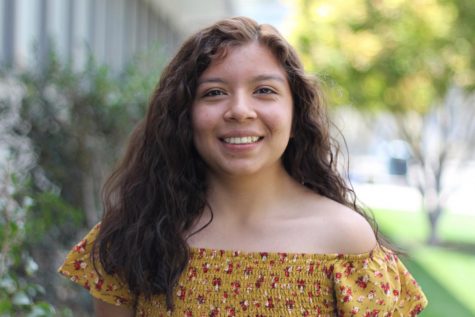AP Success Expands Research, Readies AVID Summer Program
AP Success has continued working to decrease the achievement gap, planning a weeklong summer program for AVID students and continuing to adapt curriculums and learn about better teaching methods. Carissa Lee.
April 24, 2018
AP Success this school year has continued to explore new ways to create an inclusive classroom environment for underrepresented students in AP classes, primarily in three ways:
- teaming up with College Board to experiment with pre-AP courses
- planning a weeklong AVID summer program to ease AVID students into next year’s courses
- conducting research on best teaching methods
The overarching goal of the group is to narrow the achievement gap at Los Altos — a significant disparity in academic performance between minority groups and non-minority groups. Throughout the year, the AP Success team has worked on narrowing the achievement gap through delegating and focusing on small tasks in groups, reconvening every so often.
The team, which includes all 34 AP teachers, is divided up into smaller sub-groups, such as a reading-focused group and a group that communicates with Stanford’s CSET program. In splitting up, groups are able to give individualized attention to topics such as revising curriculum and looking at the science behind effective teaching. When the whole team reconvenes, they discuss their findings to collectively move toward their long term goal of narrowing the achievement gap at Los Altos.
While the goal of the group is to make AP classes more “accessible” for students, teachers worry that this may steer their students in the wrong direction when choosing what AP classes to take and how many.
“While the goal of this group is not necessarily [to persuade] more students to take more AP classes all the time, it is trying to make more kids take AP classes,” English teacher Carrie Abel-Shaffer said. “So while that is good, I think we need to look at the other end of it and what we are also preaching and how those two things are contradictory.”
In the past year, these have been AP Success’ main steps for change:
1. Teaming up with College Board to experiment with pre-AP courses
Early January, the Los Altos World Studies and Algebra course teams were accepted into College Board’s pre-AP program, which is an effort by College Board to increase the number of students who can access and finish college-level work.
College Board will provide experimental instructional resources and assessments to pilot a curriculum that lays a stronger foundation for AP courses in future years. The goal of the pre-AP courses is to create courses that are more accessible for students and provide a pathway to AP courses.
2. Planning a weeklong AVID summer program to ease AVID students into next year’s courses
AVID teachers are in the final planning stages of creating the AP Headstart Summer Bootcamp. It aims to ease AVID students into AP level course work, giving them a chance to get to know their AP instructors and familiarize themselves with the course material.
The program will make its debut this coming fall roughly one week before regular classes begin. Headstart will be piloted with four to five of the most common AP classes amongst AVID students.
3. Conducting research on best teaching methods
The reading group will be dedicating the rest of the semester to reading “Make it Stick: the Science of Successful Learning,” a book on how to improve teaching methods by novelist Peter C. Brown and psychology professors Henry L. Roediger and Mark A. McDaniel.
The book offers techniques on creating a more productive learning environment and highlights some common teaching misconceptions that are counterproductive to learning The group will then conduct further research, analyze the studies and present their findings to the larger group.
“It is easy to fall into the routine of doing what you’ve always done,” Abel Shaffer said. “We’ve all been to high school, so we all have in our mind what a class should look like but the science behind it maybe doesn’t match the reality of it.”




